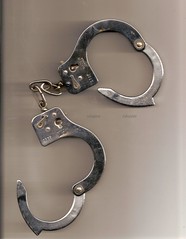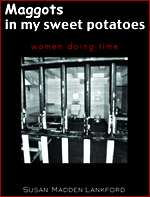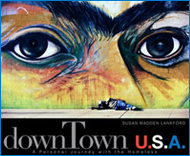
Today we have a rare treat for you, our own Susan Madden Lankford sat down for a chat about the current sad state of affairs in the arena of American criminal justice. Fortunately we were able to record most of it for your edification.
Igor Koutsenok, MD, MS, is Director of the University of California San Diego, Center for Criminality and Addiction Research, Training and Application (CCARTA) and he has full time faculty appointment at the UCSD Department of Psychiatry. Among other place he attended St. Georges Hospital Medical School, where he received a Masters Degree in Addictive Behavior. Before joining UCSD, he worked in Bulgaria as Head of Department at the National Center for Addictions and Deputy Director of the Institute of Psychology.
During the last 20 years, he served as an expert for many international organizations such as the Council of Europe, European Union, and the United Nations. Dr. Koutsenok was recruited by the UCSD Department of Psychiatry in 1997. Dr. Koutsenok led the design and implementation of the Workforce Development Training series for substance abuse counselors and criminal justice professionals working in custody and community-based treatment programs in California. He is the UCSD FACT (Forensic Addiction Treatment Certification) Board of Education Director and Director of the Offender Substance Abuse Treatment Institute.
Dr. Koutsenok serves as of the trainers for the National Drug Court Institute, providing training and education for judges and members of the judicial system nationwide. Dr. Igor Koutsenok and Dr. David Deitch designed an innovative approach to reduce recidivism in parolees, which in 2006 was presented to and authorized by the California legislature as Senate Bill 618 – Offender Re-Entry Program.
Dr. Koutsenok is teaching General Psychopathology course for second year UCSD medical students, human growth and development course for 1st year UCSD medical students, as well as he runs support group for 3rd year UCSD psychiatry residents. In 2006-2009 he designed and directed the Cal-METRO training project, a large-scale Motivational Interviewing training project to train over 3000 professionals working in juvenile correctional institutions statewide. In 2010 he designed and conducted a year long San Diego Probation Department Leadership Academy training probation supervisors in practical implementing of evidence based practices in community corrections, such as motivational interviewing, and cognitive behavioral interventions. Recently in collaboration with Christopher Lowenkamp, PhD, he designed the IBIS program – Integrated Behavioral Interventions Strategies. Currently over 300 probation officers and supervisors are undergoing training, coaching and mentoring in implementation of a truly integrated package of behavioral interventions – motivational interviewing, EPICS-II, and incentives and sanctions. He has authored and co-authored over 50 scientific publications and book chapters, such as “Substance Abuse: A Comprehensive Textbook” 4th edition, Lowinson, J., Ruiz, P., Millman, R., & Langrod, J. (Eds.), 2004; “Treating Addicted Offenders – A Continuum of Effective Practices”, K.Knight & D. Farabee (Eds.), 2005; “Advances in Corrections Based Treatment: Building the Addiction Treatment Workforce”, Praeger International Collection on Addictions, A. Browne-Miller (Ed.), 2009, “Motivational Interviewing Training for Correctional Professionals – The CalMetro Project”, Praeger International Collection on Addictions, A. Browne-Miller (Ed.), 2009. He is a member of the International Motivational Interviewing Trainers Network. In 2011 he served as a trainer for the new group of MI trainers in Sheffield, England. Dr. Koutsenok has been training motivational interviewing and other treatment strategies in offenders in Bulgaria, Malta, England, Hong Kong, Greece, Poland, Sweden, Mexico, Argentina, Hungary, and Norway. He has been invited as guest speaker to numerous conferences and professional gatherings nationwide and in more than 15 countries. He is a proud father of three.
Susan Madden Lankford
In the early 1990s, Susan Madden Lankford began photographing—and befriending—the homeless on the streets of downtown San Diego. Compelled to learn more, she gained access to a women’s detention center and soon was shooting within its walls, speaking with candor with inmates and staff. Next, pursuing the link between crime and childhood neglect, she met with young people in juvenile hall, challenging them to face their hopes and fears through artwork and the written word. Lankford’s award-winning books on homelessness, incarceration, and juvenile justice are testament to many years of commitment to complex social issues. Her venture in the realm of documentary film continues this work.
Susan Lankford grew up in the Midwest and holds a BS degree from the University of Nebraska. She attended Ansel Adams’ prestigious workshops, studied under such photographic masters as Richard Misrach and Ruth Bernhard, and spent many years as a successful wildlife photographer and portraitist. The parents of three adult daughters, Susan and Rob Lankford live in San Diego.
Please explore the rest of our website for more about Susan and her works!
















